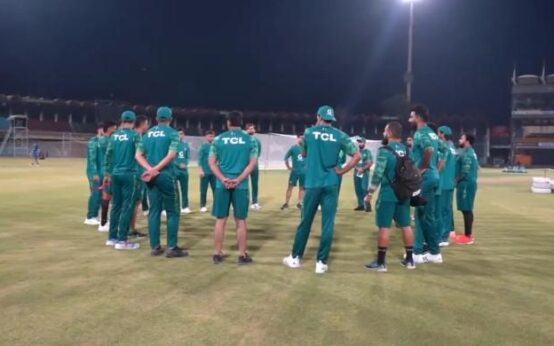“Things need a correction,” Rory McIlroy, one of the faces of the PGA Tour, said last week in Texas, “and things are unsustainable.”
“And it needs to happen fast,” Bryson DeChambeau, the LIV Golf star, said in Florida. “It’s not a two-year thing. It needs to happen quicker rather than later just for the good of the sport. Too many people are losing interest.”
While there’s more money than ever flowing through the sport, the dueling pro circuits are fighting for relevance. They’re tweaking and overhauling their business models in hopes of unlocking a return on investment, trying to funnel unprecedented sums of money to their players while still building profitable businesses. Meanwhile, a growing chorus is calling for some form of reconciliation.
This week, 13 LIV players will compete at the Masters with their PGA Tour counterparts, distinguishable only by the LIV team gear they’ll be sporting on golf’s most hallowed grounds — Sergio García, the Fireball; Bubba Watson, the RangeGoat. And for four days, fans will be reminded both of what today’s game isn’t — a unified tour where the best players consistently play against one another — and what they hope it might again become.
The sustainability discussion is two-pronged: Can the sport remain relevant and engaging to fans in its fractured state? And is the sport economically viable enough to support the current pace of spending?
“I just think with the fighting and everything that’s went on over the past couple years, people are just getting really fatigued of it, and it’s turning people off men’s professional golf,” McIlroy told reporters last week. “And that’s not a good thing for anyone.”
More than 10 months have passed since the PGA Tour announced plans to partner with Saudi Arabia’s Public Investment Fund, which owns LIV Golf. The sides blew past a Dec. 31 deadline and continue to work through details, but no deal is imminent.
LIV Golf continues to pour money into personnel on and off the course, even as its product has yet to reach a critical mass, particularly in the United States. And the PGA Tour responded to LIV’s flurry of activity by going on its own spending spree — with new expenses seemingly outpacing new revenue streams.
Because the game’s top players haven’t competed against one another in an individual event since last year’s British Open, fans have endured lackluster tournament fields and forgettable Sunday finishes. While LIV’s linear TV ratings aren’t publicized, LIV officials say their numbers on the CW Network are up 40 percent from last year and they’re pleased with early streaming viewership. The PGA Tour’s TV figures, which includes a much larger audience domestically, are down more than 15 percent.
“Ratings fluctuate from year to year,” said Sean McManus, head of CBS Sports. “As we all know, to a large extent, it depends on who is on the leader board and how close the tournament is. … But the advertisers seem happy, the sponsors seem happy, so it’s a little early to predict where there is a trend out there on the ratings.”
Neither circuit has seen its biggest stars shine on a weekly basis — last weekend’s winners were 22-year-old Akshay Bhatia on the PGA Tour and South African Dean Burmester for LIV — and the headlines focus on the off-course intrigue and the sport’s uncertain future.
“We talk so much about how important it is for players to be in the right place mentally, and I just think there’s an epidemic of distraction on the PGA Tour, whether it’s greed or trying to solve problems that are almost unsolvable, however you want to put it,” said Brandel Chamblee, a Golf Channel analyst. “I just think they’re hugely distracted.”
After shifting its business away from the nonprofit model, the tour now has to pay taxes, reward players who want more money and answer to investors who seek a return — in addition to TV executives and advertisers who expect a product that will reliably attract a huge audience.
PGA Tour officials have put together a plan that is not wholly dependent on the PIF following through on its early investment plans. The tour took on a $1.5 billion investment from a collection of U.S. sports owners known as Strategic Sports Group; the amount could double. That money helped the tour launch PGA Tour Enterprises, which will oversee all of its commercial ventures.
“Prior to creating the structure of PGA Tour Enterprises and taking on outside investment, we’ve always had in our previous structure this natural conflict between an organizational objective to maximize player earnings with growth investment,” said Jay Madara, the tour’s chief financial officer. “I liken it to meeting payroll this month [or] this quarter and not having anything left over for investment, if you will. … If there were things that made sense strategically that created long-term returns, there wasn’t patient capital for that.”
According to its most recent tax filings, the tour saw $1.9 billion in revenue in 2022, compared with $1.87 billion in expenses — and both figures have steadily risen over the years. The tour has high-dollar commitments — $4 billion due from sponsors through 2035 and $5 billion in media rights through 2030 — but also has taken on new expenses.
With an ambitious plan to offer golfers an equity stake in the tour and with tournament purses that have more than doubled over the past decade, tour officials have been trying to create new revenue streams and expand existing ones. While its broadcast rights deals run through 2030, the organization plans to open its own 70,000-square-foot production studio next year, which will enable the tour to create and distribute more of its own content.
The tour is also looking to generate more revenue from its weekly tournaments and has overhauled its event funding formula. The tour relies on local organizations to run most of its tournaments but makes money by staging six events on its own — and could take on more. The tour recently acquired a golf cart company and a logistics outfit, which will make it easier and more cost-effective to host tournaments.
One of its most audacious efforts to balance the books: The tour informed event organizers this week that they’ll soon be on the hook for a hosting fee — $250,000 for full-field events and $500,000 for the signature events next year, and twice those amounts beginning in 2026. The tour also expects organizers to kick back a percentage of hospitality sales — 1 percent next year and increasing to 2.5 percent in 2027.
Tour events traditionally have involved a philanthropic component, and while the new initiative has created fears that these fees will eat into charitable donations, tour officials said they’re confident that contributions will not suffer.
“It is something that is important to our tradition, honor and legacy. It’s something we have to balance as we move forward, as well, in terms of our new structure,” Madara said.
LIV, thanks to its deep-pocketed Saudi benefactors, does not appear to face the same economic pressures, with officials saying they’re financially ahead of schedule.
“The critical piece for us is the creation of new value through all of this,” said Jed Moore, a senior LIV consultant. “People have misunderstood the investment into players. They’ve misunderstood the investment in the Asian Tour. They’ve misunderstood why golf needed to find a way to create that new value. Sustainable economics in sports — it’s become front and center because it’s now an asset class.”
LIV officials view their product similar to Formula One — fewer events, with top-tier athletes globe-trotting between major cities. And one key cornerstone: a team-based format that LIV hopes will inspire fan loyalty and drive value.
While LIV owns a 75 percent stake in each of its 13 teams, they function as independent entities and create revenue as each sees fit. Moore said some are already profitable. None is close to reaching maturity as an asset, he said, but someday they could take on investors or be sold outright.
“Can you imagine what the Golden Bears would have been worth if Jack [Nicklaus] played in a form of LIV in his heyday? Arnie’s Army, the Big Easys, the Great White Sharks?” he said. “Imagine those teams.”
While the LIV product has been slow to catch on with golf fans in the United States, officials have been pleased with the interest they’ve seen in places such as Singapore, Hong Kong and Australia.
LIV’s season debut in Mexico marked its highest TV numbers to date — 432,000 watched on the CW for the final round, and more than 3.5 million streamed some portion of the three-day event on YouTube or LIV’s app. While not as lucrative to advertisers, the direct-to-consumer streaming options are a valuable metric to LIV officials, who say they’re targeting a younger audience. (The final round of last year’s Masters, won by Jon Rahm, averaged more than 12 million viewers.)
And while many thought LIV’s days were numbered when the PIF agreed to partner with the PGA Tour last June, LIV has only kept building. Signing Rahm before this season was a major coup, and this week LIV is hiring four senior-level executives and working on its 2025 schedule.
Even LIV’s biggest detractors (see: McIlroy, Rory) have come to reluctantly accept its place in the golf ecosystem. LIV launched in 2022 with no corporate signage at its events, but this year it has already announced more than 20 global partnerships, including with Panini and Google Cloud. Its teams have separately inked deals with more than a dozen corporate sponsors.
LIV officials say the plan was never to replace the PGA Tour, just as Formula One isn’t trying to replace U.S.-based auto racing circuits. They think the tours can coexist — different leagues coming together for a major championship, akin to the Super Bowl or World Series.
Left unsaid: While LIV tries to expand and the PGA Tour adopts a new business plan, what becomes of a weary fan base? The sport’s participation numbers have never been higher — some 45 million Americans swung a club last year, according to the National Golf Foundation — and while professional players have never been richer, the fans have been left wanting more.
“Right now, we are in the disruption phase,” Phil Mickelson, among the first to bolt for LIV, said last week, “so we are in the middle of the process. And when it’s all said and done, it’s going to be a lot brighter. But while we go through it, it’s challenging. But we’ll get there.”


 Best Underground Water Leak Detection Equipment 2024
Best Underground Water Leak Detection Equipment 2024  Best Backyard Ideas: Turn Your Outdoor Area Into a Creative and Calm Haven
Best Backyard Ideas: Turn Your Outdoor Area Into a Creative and Calm Haven  Babar, Rizwan are good players but not whole team, says Mohammad Hafeez
Babar, Rizwan are good players but not whole team, says Mohammad Hafeez  Pak vs NZ: Green Shirts aim to bounce back against Kiwis today
Pak vs NZ: Green Shirts aim to bounce back against Kiwis today